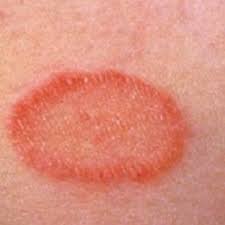
Mycoses are classified by types of fungi, pathogens, disease localization and the extent of damage of the skin orinternal organs.
For skin types mycosis (tinea corporis) accepted to the following diseases:
1. Keratomycoses - these are diseases that are caused by pityriasis versicolor. In this case, the infection affectsthe horny layer of the epidermis.
2. Dermatomycoses - skin disease caused by mold and other fungi.
3. Candidiasis - infection caused by fungi of the genus is Candida. Moreover, these microorganisms affect notonly the mucous membranes of the genitals of women and men (thrush), but also the skin, mouth and eveninternal organs.
There are also chromomycosis, blastomycosis, sporotrichosis and other diseases. They differ in the agent andlocalization.
Previously, doctors attributed to mycosis actinomycosis erythrasma, but it was found that these diseases are notfungal breed, so today these diseases called psevdomycosis.
Causes of fungal infections
Reason of infection by fungal microorganisms is often with a carrier of infection. Mycosis often "picked up" when used personal items (towel, washcloth and other toiletries, clothes, shoes, kitchen utensils, manicureinstruments), or in public places (shower, bath, toilet, gym). Normally, the immune system fights the pathogen, but if a lot of parasitic micro-organisms, or the immune system is weakened, there is microtrauma skin and mucous membranes, then the probability that the infection take hold, increases dramatically.
Symptomatology
In the presence of a fungal infection is usually the following symptoms:
1. Peeling of the skin;
2. Occurrence of diaper rash;
3. Redness, itching and irritation in the folds of skin between the fingers and toes;
4. Peeling skin and the appearance of bubbles, blisters on the feet;
5. Changes in the structure of the nail plate or the appearance of spots on it;
6. Plaque on the mucous membranes of the mouth and genitals.
When the infection affects the internal organs, the patient may experience fever, headache, weakness, chest pain and cough (in the case of lung disease), other symptoms. And if in the case of mycosis of the skin and nailspatient can independently determine the type of the disease, in the case of fungal attack internal organs, to determine cause of the disease only by a doctor.
Treatment of mycosis
In most cases, getting rid of athlete's foot - a lengthy process. The main thing - it must be comprehensive andcarried out under the supervision of a physician. The main problem is that fungal organisms can persist long on the surface of the skin, clothing, household items and other things, waiting for the right moment to relapse.Poorly conducted treatment or failure of all the doctor's recommendations can lead to the development of newdisease.
To eliminate the pathogen doctor prescribes antibiotics and antifungal indoor and outdoor use. Nature of the treatment is determined by factors such as the type of fungal organism, localization, extent and duration of the lesion. For example, for the treatment of small-type hearth surface may be sufficient to use only antifungalointments. To eliminate a more serious problem needs medication inside.
Depending on the nature of the disease, treatment duration may occur several days or several months.

